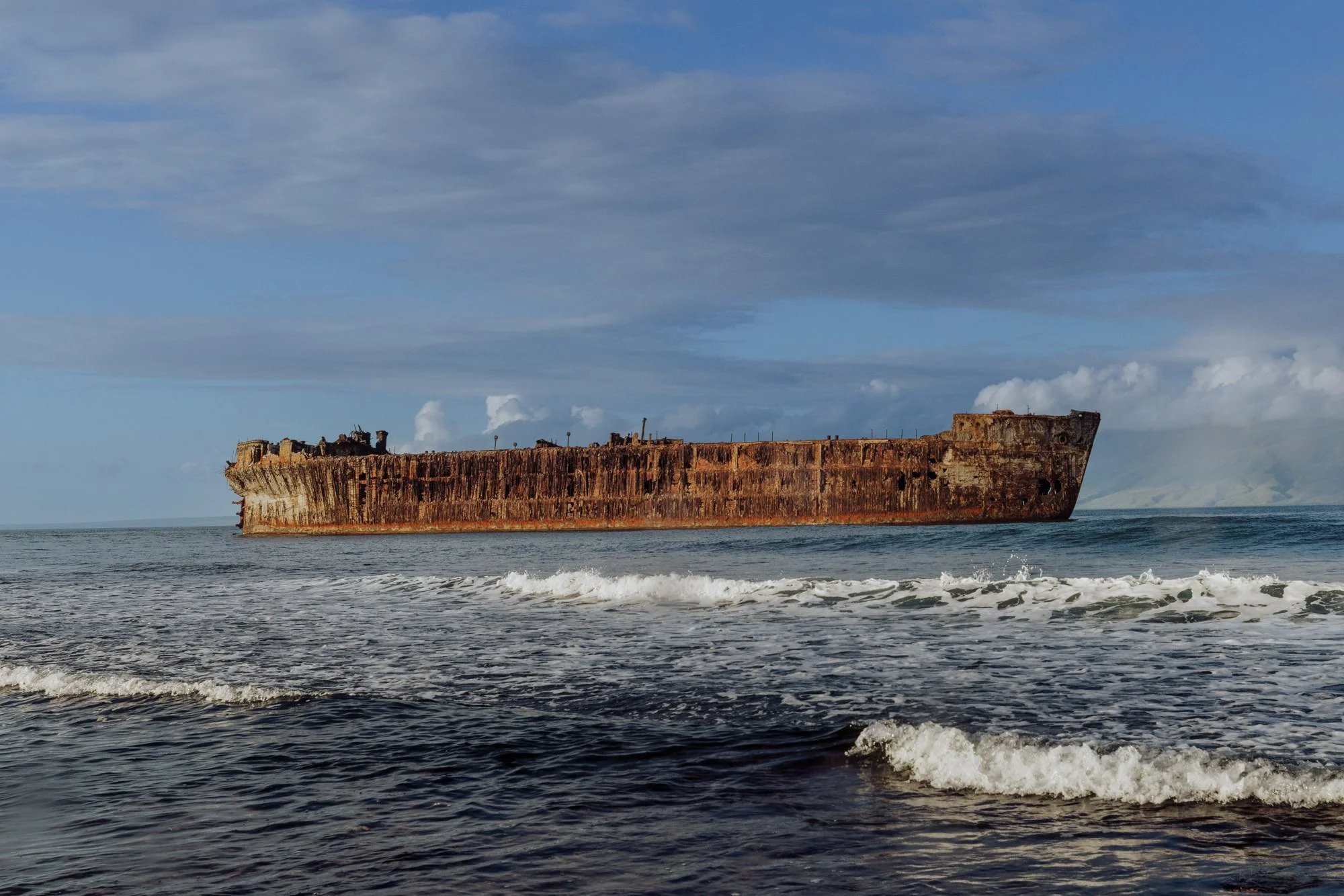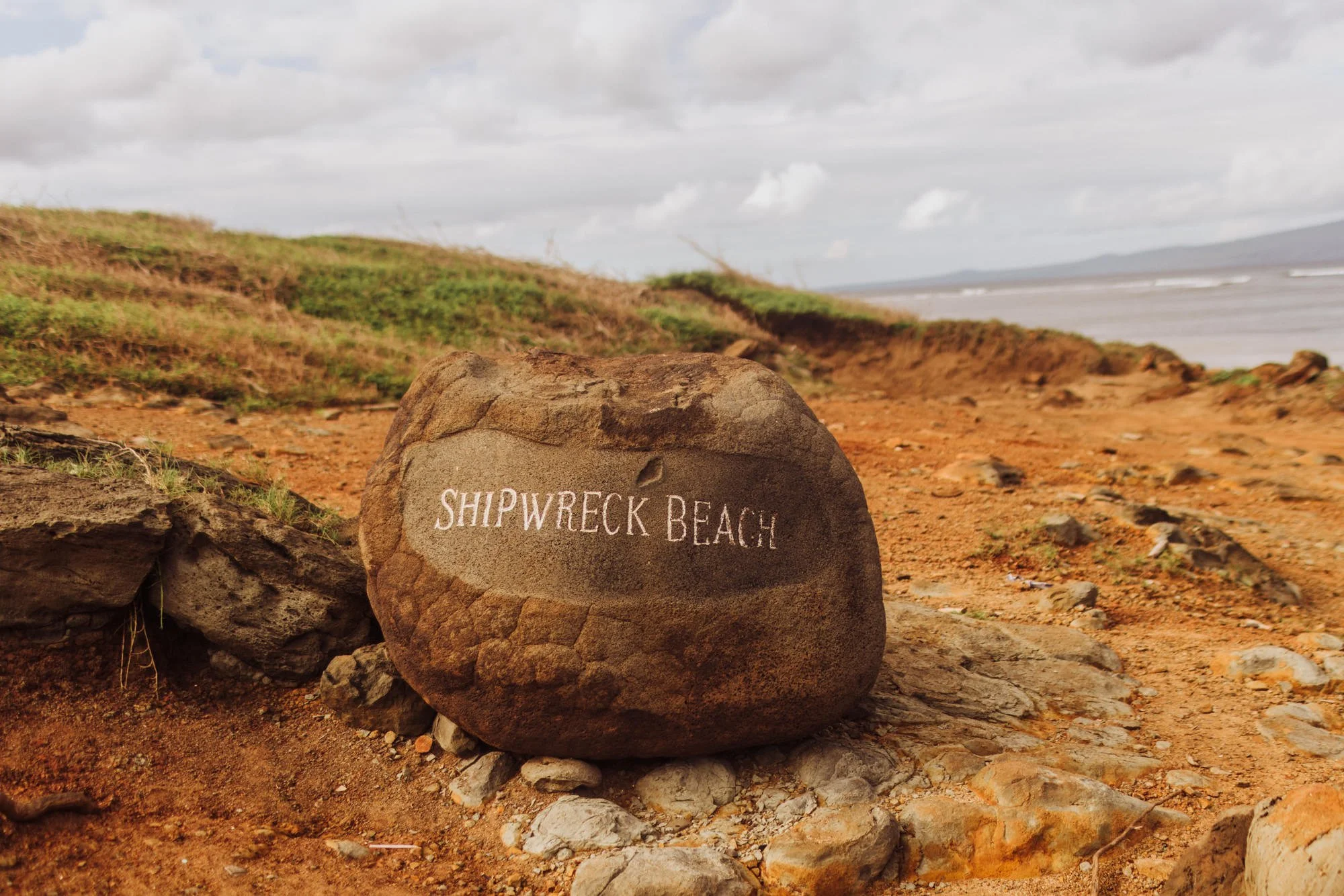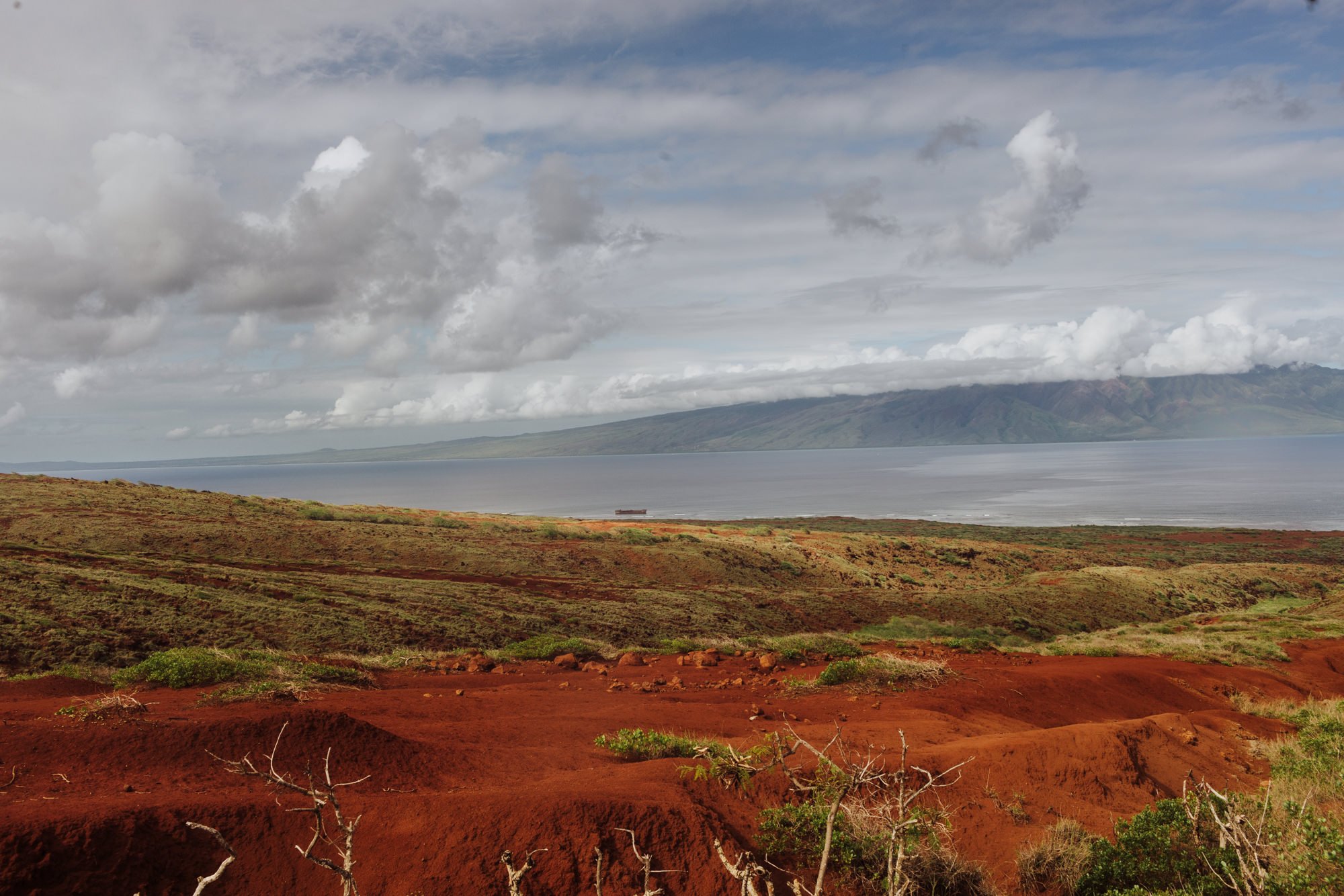Explore Hawaii’s Shipwreck Beach
The Hawaiian island of Lanai is home to fewer than 3,000 people, two luxury Four Seasons resorts, and a series of shipwrecks in the reef off the northeastern shore.
The waters in the Kalohi Channel, between Lanai and the neighboring islands of Molokai and Maui, are notoriously dangerous. The trade winds, choppy waters, strong currents, and extensive coral reef combine to create conditions which have sunk many ships over the years.
The first shipwrecks on record date back to the 1820s, and were caused by the vessels hitting the reef. They’re all completely submerged.
The main ship you’ll see, about a mile’s walk from the parking area, is a World War II-era Navy fuel barge, known as YOGN-42. It was intentionally grounded and basically scrapped on the reef more than 70 years ago.
In fact, so many ships were intentionally grounded in the channel that the Navy refers to Shipwreck Beach as “the best example of a ‘rotten row’ or disposal area in the Hawaiian Islands.”
The rocky shores are full of rusted, rotting ship bebris:
The YOGN-42 is a tanker, which (if you look closely) you can see is made of steel and concrete. The hull was constructed of concrete in 1943, and the ship was used by the Navy for only a few years.
Concrete-hulled ships were designed due to the scarcity of steel during both World Wars I and II. This photo is from the National Archives:
The YOGN-42’s wartime service is unclear, but sometime in 1949 it was intentionally grounded, and left on the reef.
The sturdy construction has left it largely intact, lodged about 200 yards off-shore.
It’s a haunting site from the beach. As the sun shifts through the day, it exposes different colors and shadows in the aging ghost ship.
A few years ago, the Navy recommended the wreck be preserved, and placed on the National Register of Historic Places. A full text of that recommendation is at the bottom of this blog.
In addition to checking out the wreck, the beach itself is a great spot for beachcombers. It’s full of interesting driftwood, pieces of ship wreckage, and other other ocean treasures which wash ashore (in addition to crabs and other creatures scurrying around on the rocks).
Beware
Even at low tide, it’s impossible to walk out toward the ship. The coral is sharp, but fragile, and shouldn’t be walked on. You can try to wind your way through some sand patches, but it’ll be a challenge. While out there, you’re likely to see turtles popping their heads up to see who’s trespassing on their reef!
The sand and dirt roads can be rough, even for the 4x4 Jeeps if it rains a lot. We had no problem, and drove out a few hours after a minor storm passed through. If it was more wet, we would’ve turned around.
We were warned: a tow will cost a minimum of $500 if you do get stuck in the sand.
Getting there
It’s an adventure in itself to get to the beach, known as Kaiolohia on Google Maps.
From Lanai City, it’ll take 30 to 45 minutes, depending on the road conditions. It’s mostly paved, though the last couple miles are on packed sand.
You’ll have to rent a 4x4, which you should book in advance.
If you’re staying at one of the resorts, they can organize a rental for you.
If you’re going for the day from Maui, there are a few rental companies, which typically charge between $200 and $300 for a day.
One option is Lanai Car Rental and another is Lanai Cheap Jeeps. Both are located in Lanai City, which is a 20-minute drive from the harbor.
You can reserve shuttles to get you to the rental company headquarters in town:
Rebecca’s Shuttle: (808) 559-0230
Dela Cruz Taxi (808 649-8001
The Navy’s nomination
The following is part of the Navy’s official nomination to place the YOGN-42 on the National Register of Historic Places:
Possibly the most unlikely candidate for nomination among these selections, the utilitarian barge YOGN-42 remains stubbornly hard aground on Lana`i’s north shore, a testimony to the strength of this steel-reinforced concrete design. While some may feel that such a non-self propelled unglamorous service vessel might not qualify for special recognition, criterion C, characteristics of a distinctive type or period or particular work of a noted builder, does not necessarily require the presence or large guns or even of engines. Concrete vessels have been called an experiment in shipbuilding.
The most distinctive element of the site is the vessel’s concrete hull type. With the scarcity of steel during World War I, Woodrow Wilson approved construction of 24 concrete hull ships. By the time 12 had been completed, the War had ended. Most eventually ended up as floating oil barges or breakwaters. One became a restaurant and is now a fishing pier. One is now a ten-room hotel. During World War II steel again became scarce, and in 1942 the US Maritime Commission contracted for the construction of 24 concrete ships, both lighter and stronger than their World War I counterparts. Two of these ships were sunk as blockships during the Allied invasion of Normandy. Nine were sunk as breakwaters for a ferry landing at Kiptopeke, Virginia. Two more are wharves in Yaquina Bay, Newport Oregon. Seven, including YOGN-82 launched (like YOGN-42) by Concrete Ship Constructors at National City, California, are part of a giant floating breakwater on the Powell River, Canada.13 Besides concrete ships, the U.S. Maritime Commission ordered the construction of several fleets of concrete barges during World War II (see individual ship histories). None are currently known to be listed as historic properties.
Although aground, YOGN-42 remains in the water, and the strong currents and winds of the channel give this vessel the distinct illusion of still being underway; the setting is striking. The materials used for construction, in this case, grant this barge its considerable ability to withstand the surf and elements on the reef. The property and the remote setting combine to produce the desire to attach a significant history to this service vessel. This is one measure of the characteristic of integrity of feeling.
Though integrity of location or association, in this case, contribute little to the historic naval significance of this gasoline barge (Shipwreck Beach on Lana`i is merely a disposal ground for abandoned ships, not a facility in any way associated with tanker or barge operation), the location itself is important in other more public terms. Shipwreck Beach is the best example of a “rotten row” or disposal area in the Hawaiian Islands. Not only have a number of historic and non-historic vessels been abandoned there, but many have been unintentionally lost on the shore’s treacherous windward reefs. There are other naval properties, both confirmed and rumored along this shore, but YOGN-42 is by far the most prominent and accessible, and remains the single property from which the whole eight mile stretch derives its name “Shipwreck Beach.” Tourism agencies actively promote the “historic” area, and visitors make the trek down to the remote location expecting a striking example of maritime history (and they are not disappointed). The sheer size and intact nature of the structure is impressive, as is the natural beauty of the immediate environment. These elements should be taken into consideration, beyond the characteristics that limit “integrity of location” strictly to a ship’s historic function.









